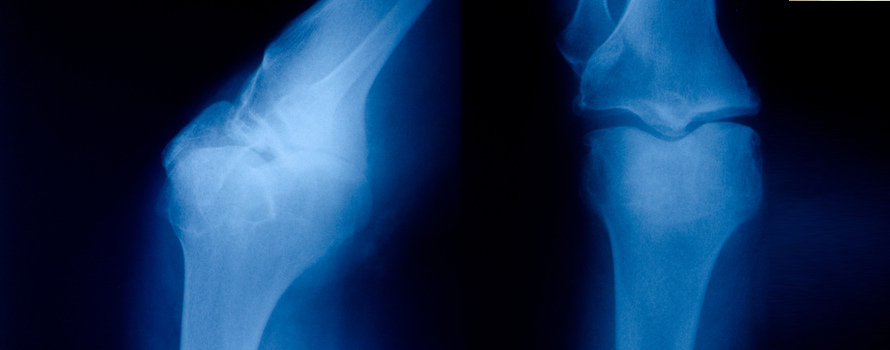What is osteoarthritis?
Osteoarthritis is caused by wear and tear of cartilage in the joints. It is the most common form of arthritis in Ireland. In osteoarthritis, the surface of a joint becomes damaged and the surrounding bone grows thicker.
There are many different types of osteoarthritis, which can affect a number of the body’s joints. The knees are the most common sites for osteoarthritis. The hips, hands, spine and big toes are also often affected.
How common is osteoarthritis in Ireland?
The condition affects 400,000 people in Ireland. There has been an increase in the number of people with osteoarthritis in Ireland for two reasons; our ageing population and more obese people putting an increased strain on their joints.
What are the symptoms of osteoarthritis?
Stiff and painful joints are the main symptoms. Symptoms vary from one person to the next. The level of physical activity can make a difference. The weather (especially damp and low pressure) may affect symptoms.
Pain tends to be worse on exercising the joint and at the end of the day. The joints do not move as freely as normal and may cause a ‘cracking’ sound when moved.
In osteoarthritis of the knee, pain is felt at the front and sides of the knee, and in severe causes it causes the legs to become bent (bow-legged). With hip joints, the pain is usually in the front of the groin, but can radiate around the side and front of the thigh, the buttock and even down to the knee. Sometimes when osteoarthritis is severe, the affected leg may shorten.
With knee and hip osteoarthritis, daily tasks such as going up or down stairs can become difficult to perform. Mobility can be affected due to pain and walking.
A complication of osteoarthritis, especially knee osteoarthritis, is calcification, which is when chalky deposits of calcium crystals form in the cartilage of joints. This process tends to make the osteoarthritis more severe and painful.
With nodal osteoarthritis, which affects the hands, the joints may become red, swollen and tender to touch. After many years, firm knobbly swellings (called Herbeden’s nodes) may form on the back of the joints. Osteoarthritis can also affect the back and neck, but this form, although extremely common, does not cause as many problems.
Most people with osteoarthritis can carry on with a normal life. Symptoms can peak for a few years, and then subside. For others, one or more joints may worsen, causing pain and disability. Unfortunately, it is difficult to predict the outcome for a person affected with the condition.
Causes
Osteoarthritis is a complex disease; a number of risk factors contribute to developing the condition. Osteoarthritis is however uncommon before the age of 40 years. Joint damage in osteoarthritis is due to wear and tear over the years
The condition affects more women than men, and tends to be more severe in women, especially in the knee joints. Being overweight is also a risk factor for osteoarthritis, especially in the knee joints.
Normal exercise is good for the joints, but repetitive and intense activity can cause injury. This explains why osteoarthritis is more common in those with physically demanding jobs (eg. osteoarthritis of the knee is common in professional footballers).
Some forms of osteoarthritis are more common in certain families and have hereditary or genetic component (eg. nodal osteoarthritis affecting the hands of middle-aged women). Other risk factors are more common in knee and hip arthritis.
How is osteoarthritis diagnosed?
Your GP will ask you to describe your symptoms and will examine your joints to feel for swelling, tenderness, thinning muscle and restricted movement. An x-ray is the most common method used to confirm a diagnosis; it will show if the bones as narrowing as cartilage thins and indicate any calcification if present.
How is osteoarthritis treated?
You can relieve your symptoms and reduce the condition progressing by adapting your lifestyle in two main ways.
- It is important to reduce the stress on your joints. This can be done by maintaining your ideal weight, pacing your activities throughout the day and using a walking stick to relieve the stress on painful joints.
- It is important to keep your joints moving. A physiotherapist or an occupational therapist can advise you on physical therapy. Two types of exercise are important in your daily routine. The first type is strengthening exercises, which help to improve tone and strengthen important muscles. The second type of exercise is aerobic exercise (increases your heart rate), which can help to reduce pain.
Your doctor may prescribe one or more of the following types of medications:
- analgesics (painkillers) which relieve pain (non-prescription and prescription)
- non-steroidal anti-inflammatory drugs (NSAIDs) which reduce inflammation, stiffness and pain, but do not reduce joint damage.
- corticosteroids, which also reduce inflammation, and can be directly injected into a joint for fast relief
Surgery
Joint replacement surgery is only considered in those with severe osteoarthritis, if the joint is very painful or if there is a risk that you will lose overall function. There are different kinds of surgery for osteoarthritis. With some surgery, bits of cartilage are removed from the joint. Other kinds of surgery repair or rebuild parts of the bone, or replace a joint with an artificial man-made joint. Minor surgery can be performed on the knee. Joint replacement involves major surgery, and is most often performed on hip and knee joints.




